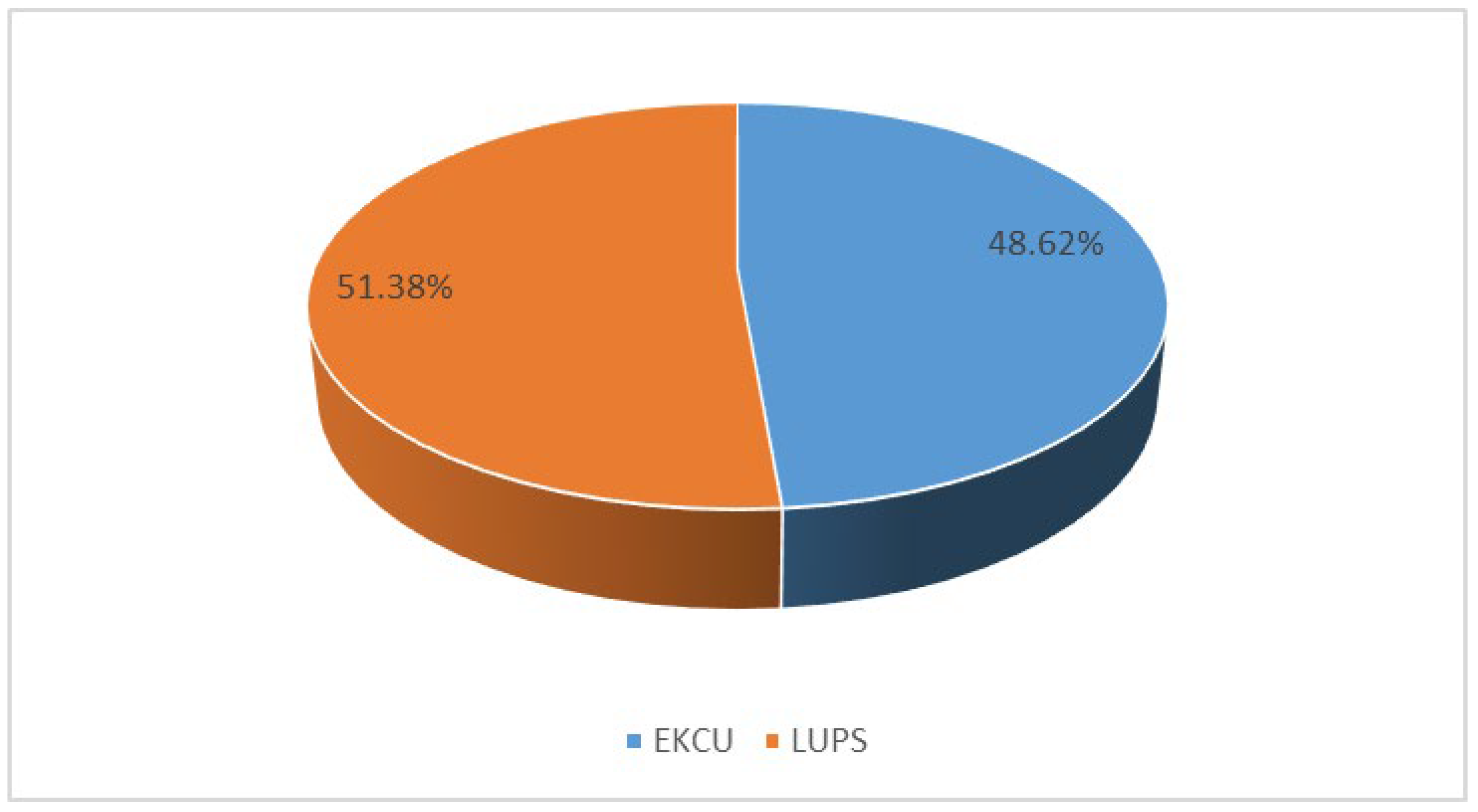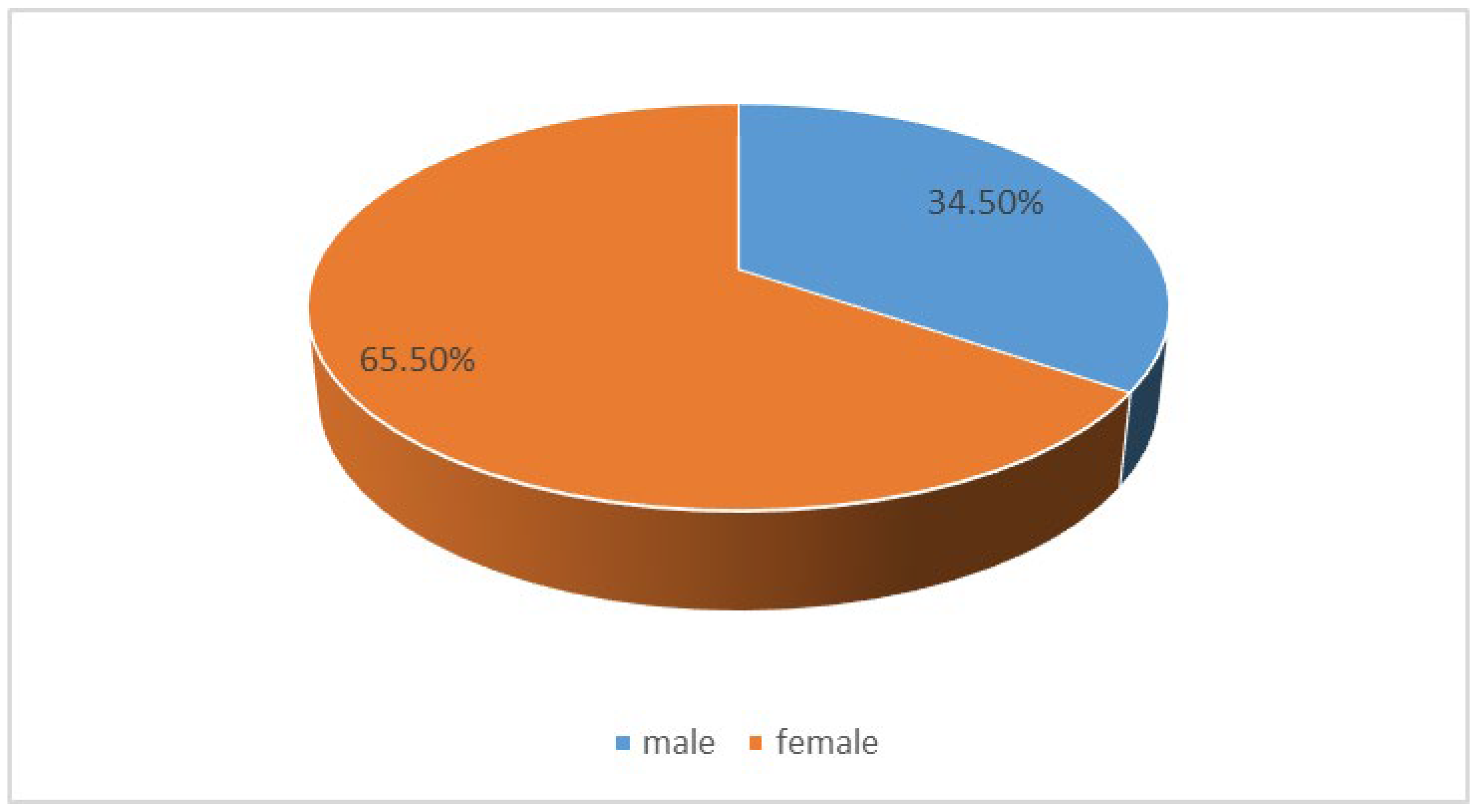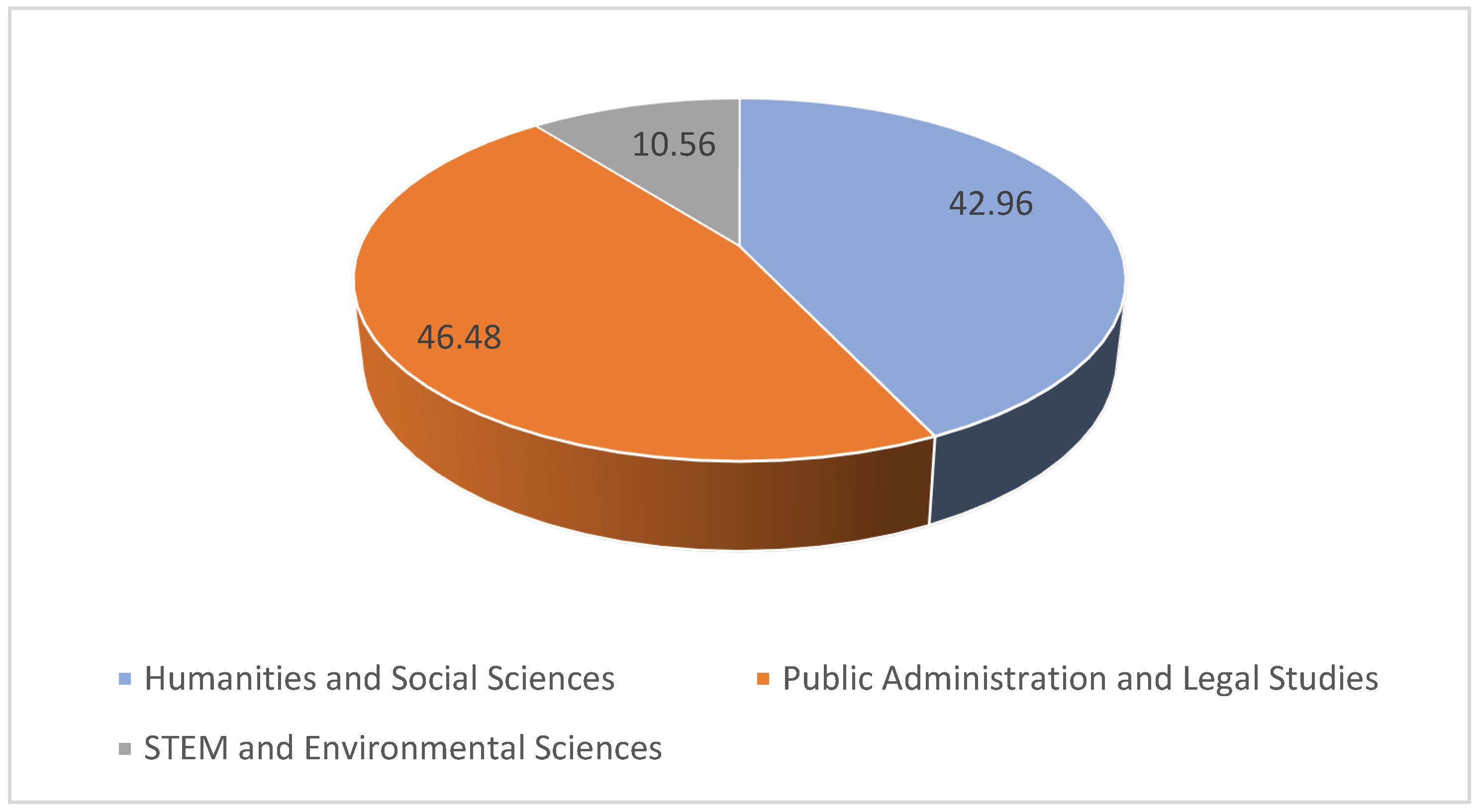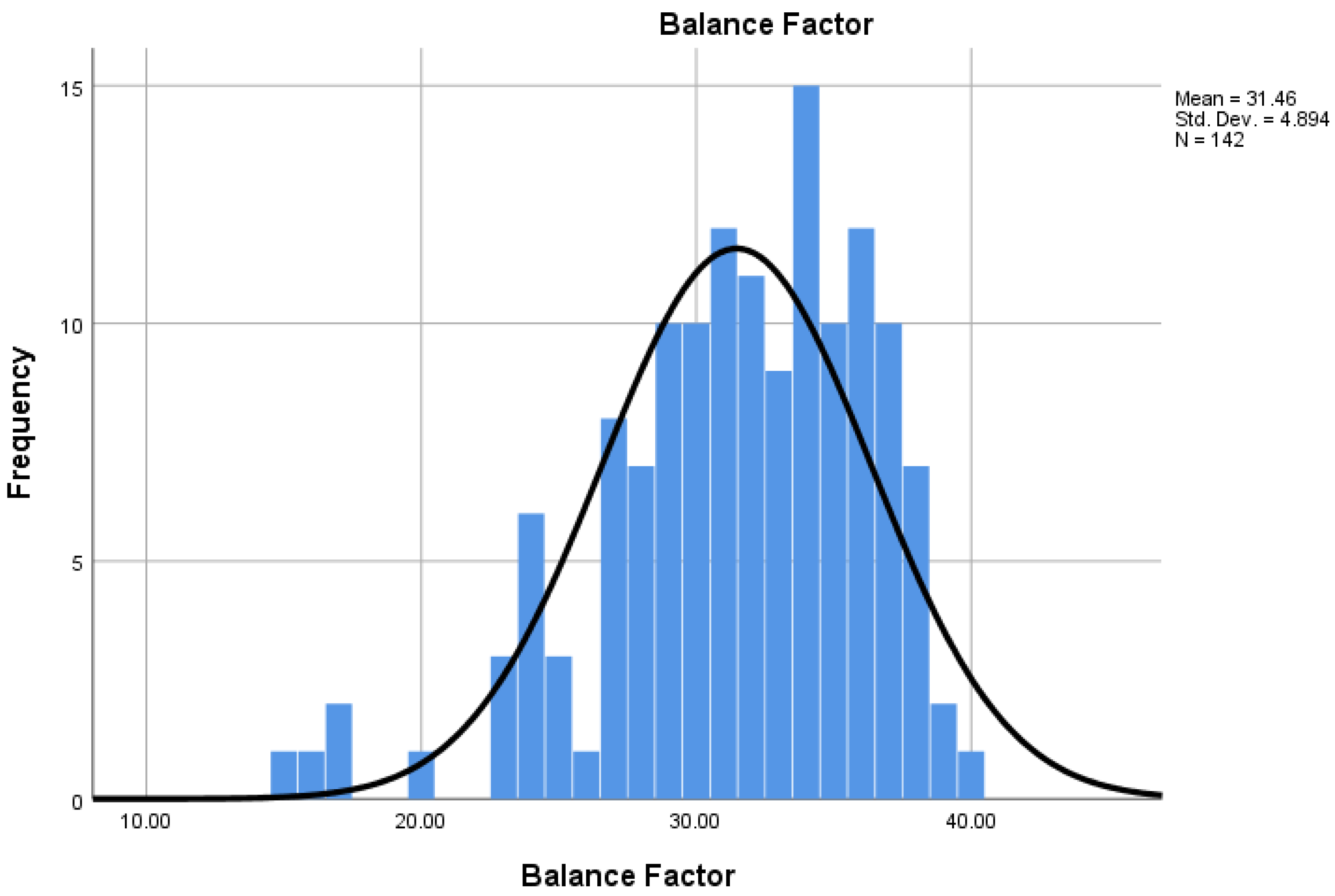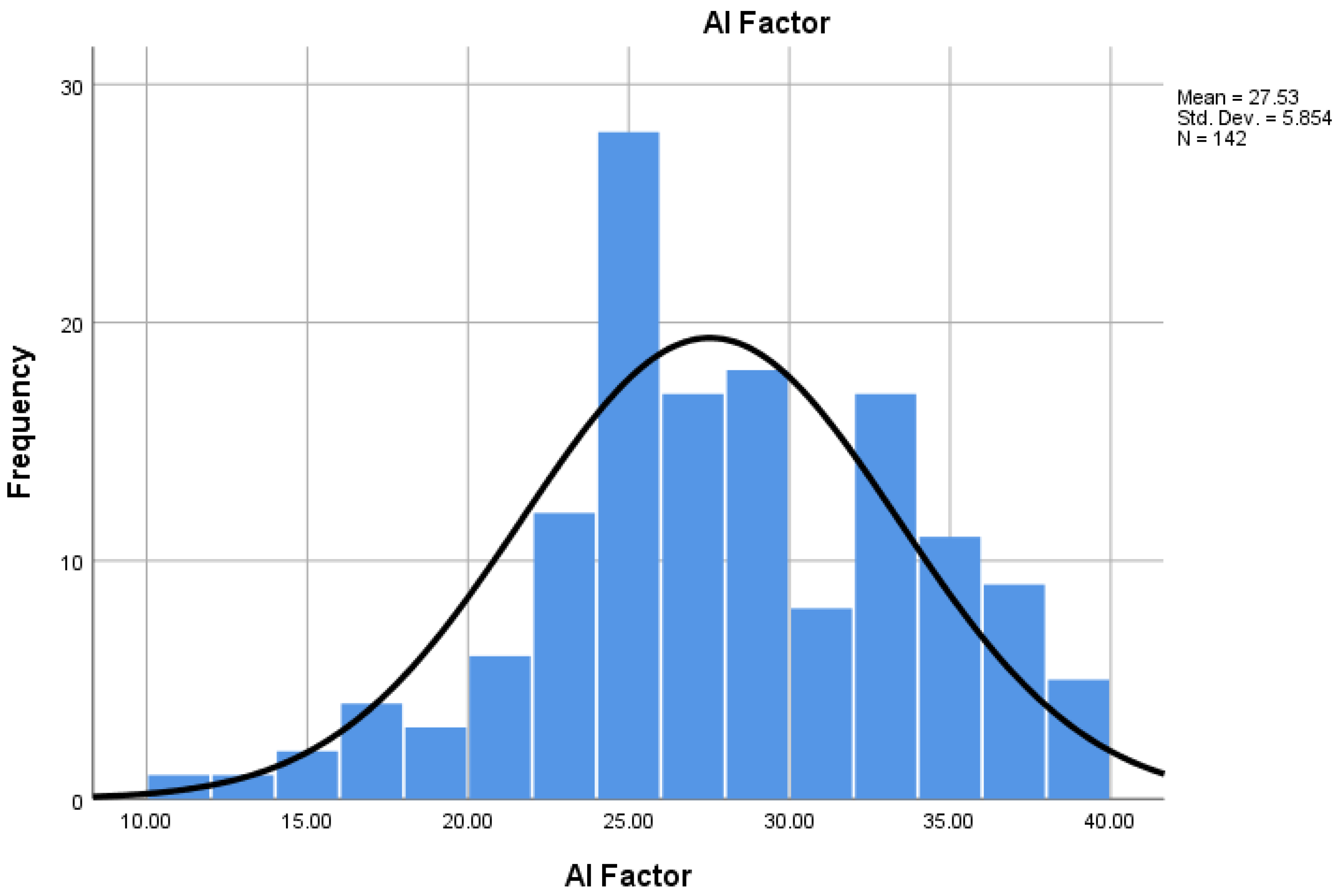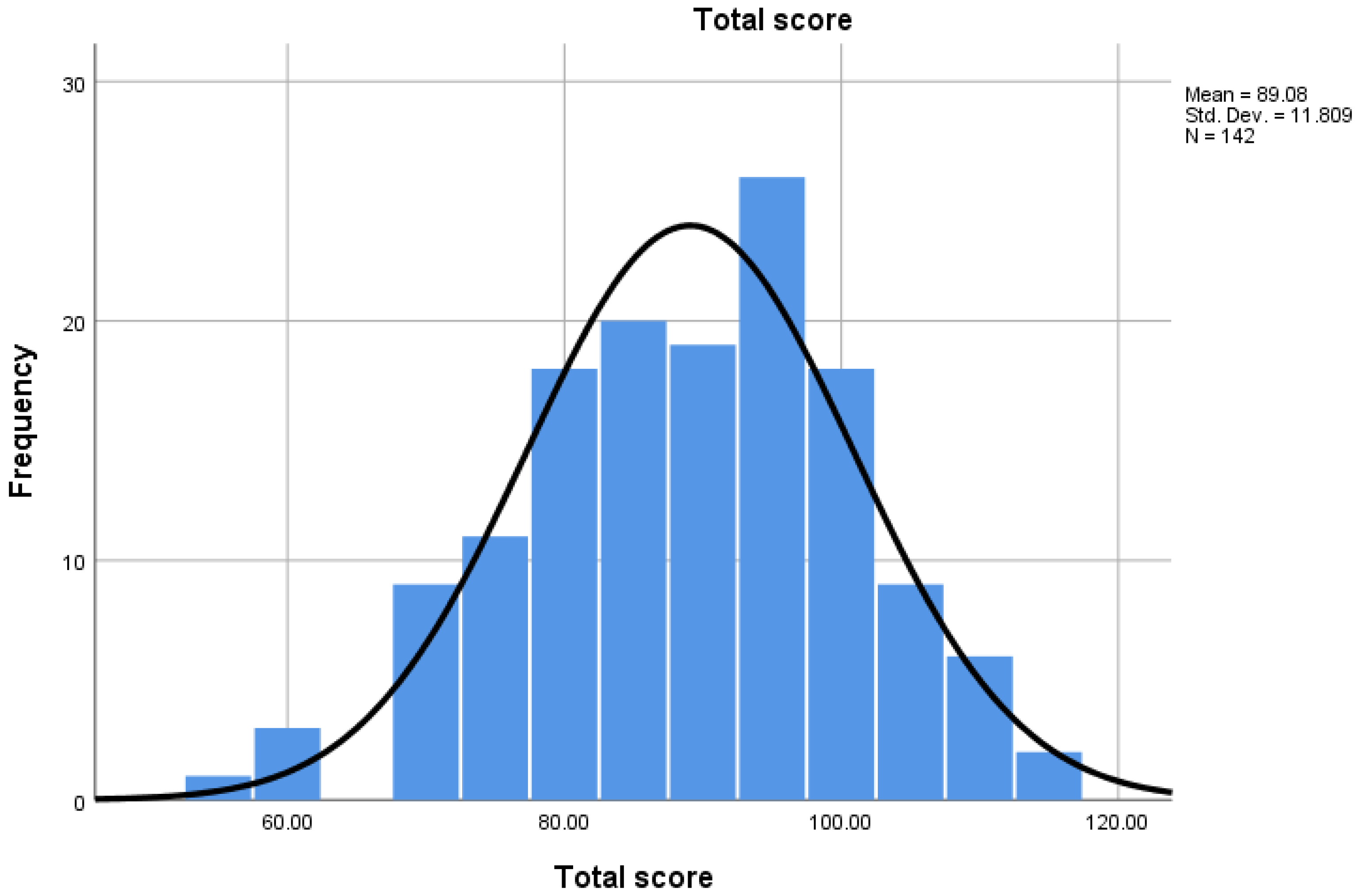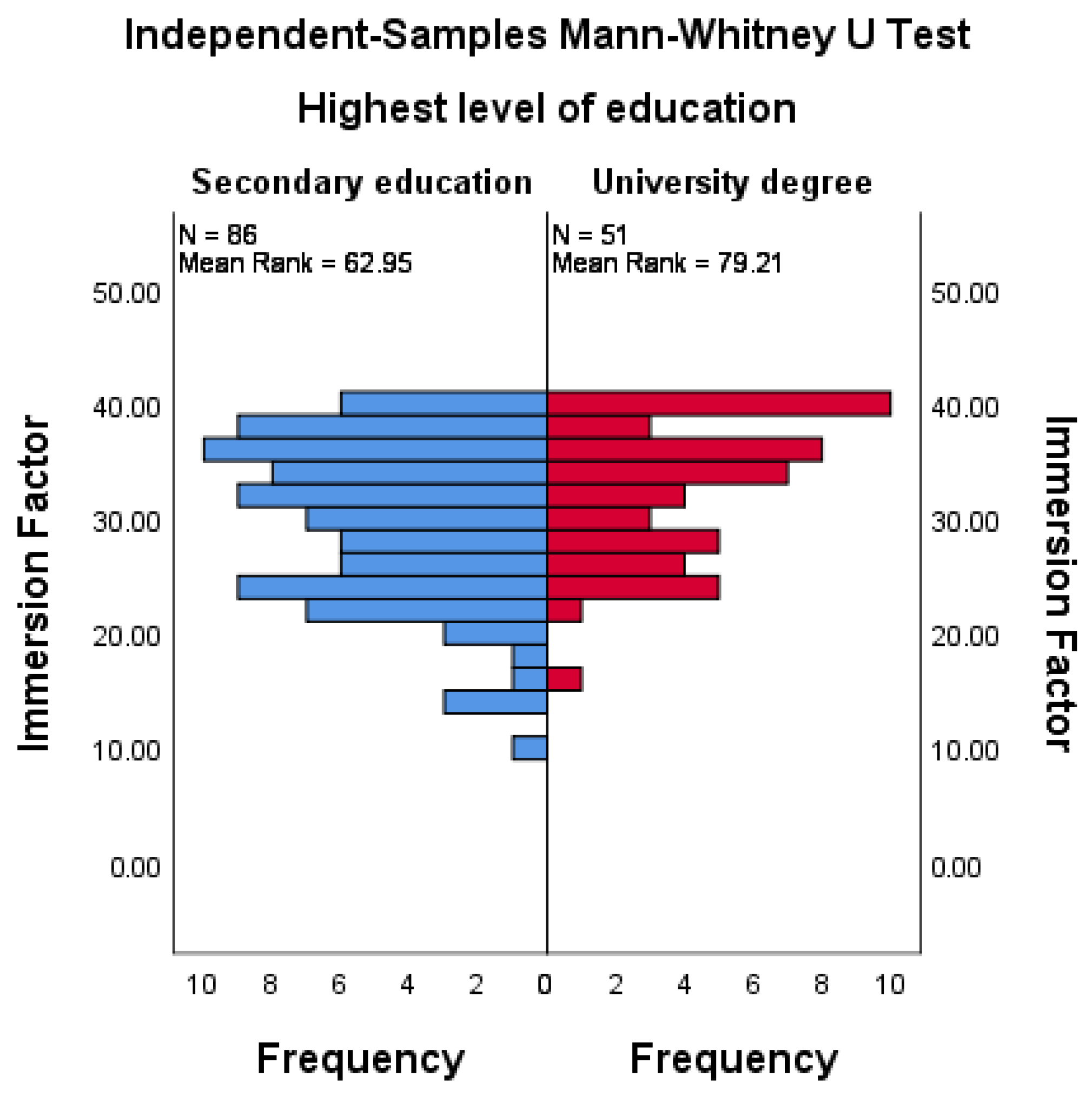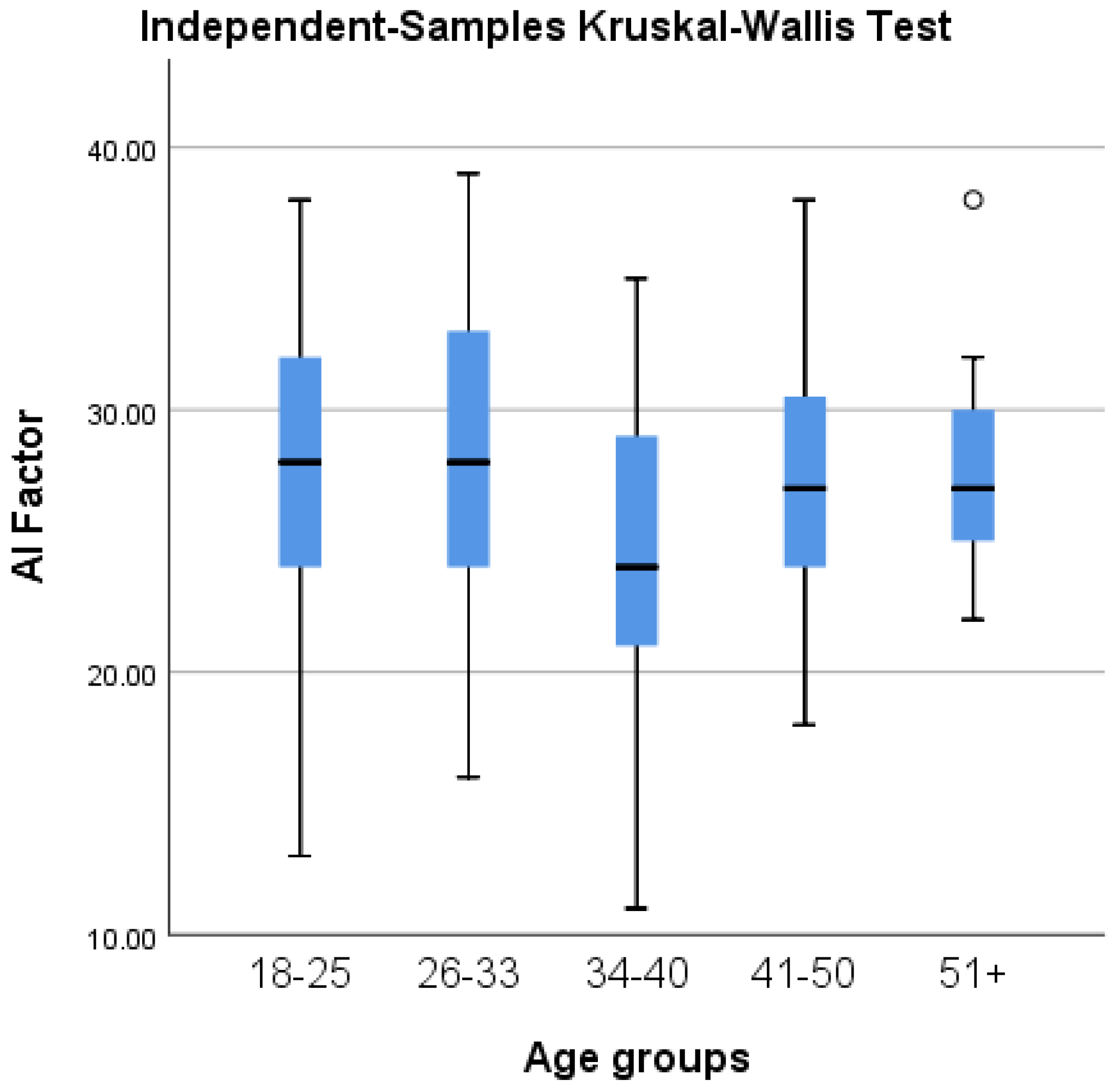1. Introduction
The rise of artificial intelligence (AI) in education is one of the most significant paradigm shifts of the last decade. There are different types of AI, such as machine learning, natural language processing, and generative models (e.g., ChatGPT and Gemini), that are becoming increasingly prevalent in learning support. These tools aim to automate the teaching and learning process, but also to enable a deeper understanding of, and support for, learner motivation, engagement, and the learning experience. A key aspect of optimizing the learning experience is the flow experience. The presence of this experience correlates with learner performance, satisfaction, and intrinsic motivation [
1]. This paper aims to review the relationship between AI tools and the flow experience, particularly in light of empirical research conducted among university students.
According to flow theory, an optimal experience occurs when an individual’s abilities are balanced with the challenges of the task, and when goals are clear and the individual receives immediate feedback [
1]. In an educational setting, this state results in high levels of engagement and joyful learning experience and deep processing [
2]. For university students, flow plays a particularly important role in self-directed learning, where autonomy and intrinsic motivation are the determining factors [
3]. In digital learning, the flow experience is influenced by a number of factors, such as the use of tools, instructor presence, the nature of the course material, and the degree of interactivity [
4]. Ref. [
5] was among the first to point out that computer-assisted learning can result in a flow state when learners feel relevant and challenged by the tasks. The Hungarian educational psychology literature also addresses the factors that trigger flow. Another article [
6] emphasize that the quality of the learning experience is significantly influenced by the pedagogical environment and the feedback provided during the learning process.
The integration of AI tools into education can have three main impacts: (1) Providing personalized learning pathways, (2) providing real-time feedback, and (3) analyzing learner data for learning analytics [
7]. Systems such as intelligent tutoring systems (ITS), recommender systems, and predictive models can be particularly useful in higher education, where students’ learning styles and prior knowledge can vary significantly [
8]. Generative AI tools, such as ChatGPT, Copilot, and Gemini, have opened up a new dimension in learning support. These systems can interact with users, providing information, answering questions, offering feedback, and encouraging reflection; answer questions; provide feedback; and encourage reflective thinking [
9].
The study of the flow experience is becoming increasingly important in the context of AI-based learning environments. To this end, [
10] developed the Artificial Intelligence Factor-Facilitated Flow Questionnaire (AIFLQ), which, in addition to the classical flow dimensions (immersion, challenge–skill balance, clear goals, and immediate feedback), measures an AI-specific factor. This new factor focuses on elements such as technological reliability, personalization, and learner autonomy when using generative AI tools. The AIFLQ includes statements such as ‘While using the AI tools, I felt that the technology supported my individual learning needs’ and ‘Using generative AI tools increased my motivation to learn’. These elements help us understand how AI contributes to the flow experience. The AIFLQ has been validated among university students and has high internal reliability (Cronbach’s α > 0.80). Its multidimensional factor structure corresponds to the integrated framework of flow theory and instructional technology models [
10].
Several studies have investigated the relationship between AI tools and the flow experience. For example, [
11] used an intelligent tutoring system in a university programming course and found that the system’s real-time feedback and adaptivity significantly increased students’ flow experience. Similar findings emerged from the research of [
12], who observed heightened immersion and a greater sense of competence during language learning tasks facilitated by generative AI tools. Others [
13] examined the impact of generative AI tools (e.g., ChatGPT) on flow among a Chinese university population. Their findings revealed that female students and those with higher self-efficacy exhibited higher flow scores. Positive attitudes and experiences with AI tools also contributed to deeper engagement.
Although AI tools can optimize the technological aspects of the learning environment, the pedagogical framework and instructor support are key to developing a positive learning experience [
14]. Structured implementation, clear articulation of learning objectives and a reflective learning culture can all multiply the effectiveness of AI tools. Studies [
15] have shown that, in university courses where instructors facilitated the use of AI tools, students reported a significantly higher flow experience than in courses where the introduction of tools was left to self-discovery. The development of the flow experience is influenced not only by technology and pedagogy, but also by background variables of the learner. International research [
6,
12,
13,
16] suggests that gender, educational attainment, experience with AI tools, and self-efficacy can all significantly impact flow intensity. Females more often reported higher levels of immersion, while students with less experience of technology had lower levels of challenge and confidence in AI. Psychological factors such as learning orientation, grit, and self-regulation ability can also predict learners’ ability to achieve a state of flow when using AI tools [
17]. Grit is defined as an individual’s persistence and commitment to long-term goals, while self-regulation is the ability to consciously manage, plan, and control the learning process [
18,
19]. These qualities enable learners to adapt more effectively to challenges and have more immersive learning experiences.
A review of the existing literature shows that AI tools can have a positive impact on university students’ flow experience when embedded in an appropriate pedagogical framework. The introduction of the AIFLQ questionnaire offers new ways to measure the combined effects of flow and AI experience, supporting future empirical research in this area. However, it is important to emphasize that technological innovation alone does not guarantee the achievement of a flow state. A deep, immersive learning experience requires the combination of instructor mediation, learner psychological characteristics and environmental factors. Further research is needed to explore the long-term effects of AI tools and identify the needs of students from different disciplines.
Although previous studies have examined the relationship between artificial intelligence (AI) tools and flow in learning environments, they have typically focused on specific use cases or lacked a comprehensive framework for evaluating the interaction between AI-supported learning and demographic and psychological variables. In particular, little is known about the performance of validated flow instruments, such as the Artificial Intelligence-Facilitated Flow Questionnaire (AIFLQ), across diverse learner profiles in real-time academic contexts. This study addresses these gaps by examining how gender, educational attainment, and personality type shape the flow experience in higher education settings. This contributes new empirical insights to educational psychology and digital pedagogy.
2. Materials and Methods
The integration of artificial intelligence tools in higher education is a rapidly evolving field. It offers opportunities to enhance learner motivation and engagement, as well as presenting complex challenges that deepen our understanding of the learning process [
7,
9]. While the concept of the ‘flow experience’ as an optimal learning state has been studied extensively [
1], the specific effects of AI-supported learning environments in this regard remain under-explored [
12]. In this article, the authors use the term “artificial intelligence-assisted” to point out that a given process, activity, or system relies in some way on artificial intelligence (AI) tools, algorithms, or services to improve its operation or efficiency. Here, AI is used to personalize and support the learning experience for the purpose of content creation. Current research indicates that AI tools not only serve as instruments, but also function as active learning support systems, offering immediate feedback, adaptability, and personalized learning pathways [
8,
11]. While these features have the potential to facilitate the development of the flow state, the mediating or moderating role of individual factors such as gender, personality traits, and prior learning background in this context has not yet been adequately analyzed [
13,
18].
It is particularly important to explore the role of psychological personality variables such as self-regulation, grit, and motivational profiles, as these have a profound impact on learners’ flow experience and interaction with technology [
17,
18]. Previous findings suggest that demographic and psychological factors can significantly impact the effectiveness of AI-based learning environments, but further empirical studies are needed to explore the exact mechanisms and relationships [
12,
13].
This study aims to address this research gap by investigating the effects of AI on flow status, focusing particularly on gender differences, prior educational attainment and personality traits, which may play a moderating role in developing optimal learning experiences.
Several consistent patterns and gaps have emerged from the reviewed literature that inform the present hypotheses. While prior studies suggest that AI tools may enhance learner engagement and immersion [
11,
12], they often fail to consider individual learner characteristics, such as gender or educational background [
6,
13]. Research also suggests that women may experience greater emotional engagement and that educational experience can impact self-regulated learning strategies, both of which are important for achieving flow [
18,
19]. However, there is a lack of conclusive evidence on whether such demographic and psychological variables systematically influence the flow state in AI-supported learning. Based on this body of evidence and the conceptual frameworks outlined earlier, the following four hypotheses have been developed.
2.1. Hypothesis
The integration of artificial intelligence (AI) tools into higher education presents both opportunities and challenges for students and educators alike [
20]. While AI-based learning support has the potential to enhance engagement and motivation, understanding how it affects students’ deep focus and optimal learning experiences remains a complex task. Achieving and sustaining a state of flow—a psychological state characterized by full immersion and intrinsic motivation—is already difficult in traditional learning environments, and the introduction of AI adds new variables to this dynamic. Moreover, individual differences such as gender, educational background, and personality traits may influence how students experience flow during AI-supported learning. Previous research highlights that technology’s effectiveness in education often depends not only on access but also on learners’ characteristics and contextual factors. However, the role of AI tools in fostering flow has been understudied, and little is known about whether demographic and personality variables moderate this experience. This study aims to fill this gap by examining four specific hypotheses related to AI usage, gender differences, educational qualifications, and personality types in relation to flow among university students. By doing so, it contributes to a deeper understanding of how AI can be consciously designed and implemented to support optimal learning states.
Therefore, as mentioned above, based on the literature on the topic and experience, the authors have established four hypotheses during research efforts.
H1. The use of AI-based learning support is positively associated with the experience of flow among university students.
H2. Female students report significantly higher scores on the immersion factor of flow compared to male students.
H3. Students with higher educational qualifications demonstrate significantly higher overall flow scores than those with lower qualifications.
H4. Personality type has no significant effect on the experience of flow among university students.
2.2. Methods
The primary aim of this study was to examine the relationship between background variables—namely, gender, educational attainment, institution attended, and personality traits—and the experience of flow during AI-supported learning environments. Specifically, we sought to understand how these factors influence students’ engagement and optimal learning states while using AI tools in academic settings.
To test the proposed hypotheses, a quantitative research design was employed. Data collection took place during regular classes at two Hungarian universities: Ludovika University of Public Service (LUPS) and Eszterházy Károly Catholic University (EKCU). This approach allowed for capturing authentic student experiences in real-world AI-enhanced educational contexts.
Statistical analyses were conducted using non-parametric tests suitable for the flow measurement variables. The Kruskal–Wallis test was applied to investigate differences across multiple groups, such as varying levels of educational attainment, while the Mann–Whitney U test was used to assess pairwise comparisons, for example between genders or institutions. Descriptive statistics were also calculated to summarize the results of the various flow factors, providing an overview of the main tendencies and variability within the sample.
Together, these methods enabled a rigorous examination of how demographic and personality variables relate to the flow experience in AI-supported learning, contributing valuable insights to the intersection of educational psychology and digital pedagogy.
The data were collected using a purposefully developed and validated questionnaire tailored to assess the experience of flow within AI-supported learning environments. A total of 142 students participated in the study, with 68 respondents from Eszterházy Károly Catholic University (EKCU) and 74 from Ludovika University of Public Service (LUPS) (
Figure 1). During the test, students filled out a questionnaire accessible via QR code during class. Completion was anonymous and voluntary, and no prior information was provided. We did not explain the purpose of the test because we were interested in their opinions and did not want to influence them. Pie and bar charts were employed to visually represent demographic distributions and descriptive statistics in a clear and accessible manner. Pie charts were used exclusively for nominal categorical variables (e.g., gender, academic orientation), where proportions are easily interpreted. For continuous variables (e.g., immersion, balance, AI factor), bar charts displaying means and standard deviations were chosen to illustrate central tendency and variability. These visual formats are appropriate given the nature of the data and are commonly used in psychological and social science reporting to enhance interpretability for a broad readership.
Due to the ordinal nature of the flow measurement scales and the non-normal distribution of the data, as confirmed by preliminary normality tests, non-parametric statistical methods were employed to test the proposed hypotheses. The Mann–Whitney U test was used to compare two independent groups (e.g., gender or education level), and the Kruskal–Wallis test was used to compare more than two categories (e.g., age groups). The threshold for statistical significance was set at p < 0.05. Where multiple comparisons were conducted, Bonferroni corrections were applied to control for Type I error inflation. These tests were selected to align with the constraints of the dataset in terms of the measurement scale and sample size.
Given that the data in several instances deviated from normality and group variances were unequal, the assumptions of parametric tests were not met. Accordingly, non-parametric methods were employed as they provide more robust and reliable results under such conditions.
In the sample, approximately one-third of the participants were male, while two-thirds were female. This distribution offers a meaningful lens through which to consider the dynamics of flow in AI-supported learning, as gender-related factors may influence how learners engage with technology-enhanced educational environments (
Figure 2).
The participants represented a diverse age range, with the majority falling into the 18–25 age group (52.1%). This was followed by 26–33 years (16.2%), 41–50 years (12.7%), 34–40 years (14.1%), and 51 years or older (4.9%). This varied age composition suggests that AI-supported learning environments are engaging for learners across different life stages, offering valuable insights into how flow is experienced in both traditional and non-traditional student populations (
Table 1).
Participants were also asked to identify the academic field that best reflects their personality or way of thinking. The majority (46, 5.8%) associated themselves with Public Administration and Legal Studies, followed by Humanities and Social Sciences (43%), and STEM (science, technology, engineering, and mathematics) and Environmental Sciences (10.6%). This distribution suggests a strong representation of individuals who are oriented toward human-centered, interpretative, and socially engaged domains, while also including those with analytical and systematic thinking styles that align with legal systems and complex regulatory frameworks. Such diversity may influence how learners relate to AI-supported learning environments and experience flow in different cognitive and disciplinary contexts (
Figure 3).
The questionnaire consisted of 24 items, systematically divided into three distinct flow-related factors, each represented by eight questions. These factors were: immersion, which captures the degree of deep engagement and absorption in learning activities; balance, reflecting the perceived equilibrium between challenge and skill; and the AI factor, which specifically addresses the influence and role of AI tools in the learning process.
To assess the participants’ flow experience during the task, we used the AI and Flow Learning Questionnaire (AIFLQ) developed by [
10]. This instrument is designed to measure the flow state in learning environments that involve artificial intelligence. It captures flow through a combination of subjective self-report and objective indicators recorded on a visual flow measurement board.
The AIFLQ focuses on three core dimensions of the flow experience: Balance, Immersion, and AI Support. Each of these dimensions is rated on a scale from 0 to 100%, and together they form the basis for calculating the Total Flow Score.
Balance reflects the perceived match between the task’s difficulty and the individual’s skill level.
Immersion indicates how deeply the participant is engaged and mentally involved in the task.
AI evaluates the extent to which the AI system contributes positively to maintaining the user’s flow.
The Total Flow Score is computed as the average of the three dimensions. A score above 80% is considered indicative of a sustained or optimal flow state, suggesting a high level of engagement and learning effectiveness during the activity.
3. Results
The final sample comprised 142 university students, of whom 68 were from Eszterházy Károly Catholic University (EKCU) and 74 were from Ludovika University of Public Service (LUPS). Approximately two-thirds of the participants identified as female and one-third as male. The majority (52.1%) were aged 18–25, followed by older age groups ranging from 26 to over 51.
The questionnaire included 24 items across three key flow-related dimensions: Immersion, Balance (challenge–skill match), and AI Support. Each factor was measured on a 0–100% scale using the Artificial Intelligence-Facilitated Flow Questionnaire (AIFLQ). A composite Total Flow Score was calculated as the average of the three sub-scores.
Descriptive statistics were calculated for each factor. For instance, LUPS students achieved an average Immersion score of 83.31% (SD = 12.56), whereas EKCU students achieved an average score of 66.40% (SD = 7.05). These values suggest moderate to high levels of perceived flow during AI-supported learning tasks.
Based on the methodology described above, we conducted an evaluation of students’ flow experiences across two universities. The following section presents the aggregated results of this assessment, highlighting key trends and offering insight into the current state of AI-supported learning environments.
The findings indicate a remarkable consistency between the two universities in terms of the AI Flow experience reported by students. Across both institutions, the average Total Flow Score was approximately 68%, as measured by the AIFLQ. This suggests that students experienced a moderate level of flow during AI-supported learning activities, regardless of institutional or contextual differences.
While this score falls below the 80% threshold typically associated with a sustained flow state, it nonetheless reflects a solid foundation upon which further development can build. The results highlight both the current potential and the untapped opportunities in designing AI-enhanced educational environments. These findings emphasize the importance of continued refinement in how AI systems are integrated into learning processes, with the goal of increasing student engagement and reaching higher levels of flow in future implementations (
Table 2).
Across the two universities, participants achieved an average score of 30.08 (out of 40) on the Immersion factor, 31.46 (out of 40) on the Balance factor, and 27.53 (out of 40) on the AI Support factor. These individual dimensions contributed to a combined Total Flow Score mean of 89.08 (out of 120). These results indicate a generally high level of flow experience among the respondents, suggesting that the AI-supported learning environments were effective in fostering engagement, balance, and meaningful interaction with AI tools (
Figure 4,
Figure 5,
Figure 6 and
Figure 7).
Although the difference in the Immersion factor between male and female participants was not statistically significant in the larger sample (
p = 0.059), the Mann–Whitney U test still revealed a trend, with female participants showing higher mean ranks. This tendency, consistent with findings from the earlier, smaller-sample analysis, suggests a potential gender-related difference in how learners experience AI-supported educational tasks. While this result does not meet the conventional threshold for significance, it may indicate that women tend to feel more immersed, warranting further investigation into gender-specific learning experiences with AI tools (
Table 3 and
Figure 8).
Further analysis was conducted to examine potential differences in flow experiences across demographic groups. The results revealed a statistically significant difference in the Immersion factor, while the AI Support factor showed a non-significant trend toward group differences. These findings suggest that certain aspects of the flow experience—particularly Immersion—may be influenced by variables such as age. Although the difference in AI Support did not reach statistical significance, the observed pattern still warrants further exploration of how different groups engage with AI-supported learning environments (
Table 4).
Regarding the Immersion factor, the Kruskal–Wallis test revealed a significant difference between the 18–25 and 34–40 age groups, with the 18–25 group showing the lowest mean rank. Although the differences between the 18–25 age group and all other age groups were not statistically significant, it is noteworthy that the 18–25 group consistently had the lowest mean rank across comparisons, suggesting a potential trend (
Table 5 and
Figure 9).
While the analysis did not reveal any statistically significant differences between age groups in relation to the AI factor, a noteworthy trend was observed. Specifically, the two youngest age groups (18–25 and 26–33) demonstrated the highest mean ranks among all groups. Although these differences did not reach statistical significance, the consistent elevation in mean ranks among younger participants may indicate a potential age-related pattern in AI-related attitudes or behaviors. This trend, albeit preliminary, suggests that younger individuals might be more receptive to or engaged with aspects measured by the AI factor. Further studies with larger samples may be needed to clarify the nature and significance of this relationship.
A possible explanation for this pattern is that the 18–25 age group, having grown up in a digitally native environment, may be more comfortable and adept at leveraging AI technologies, resulting in a higher appreciation and utilization of AI support. In contrast, the 34–40 age group might be less familiar or less inclined to fully engage with AI-driven tools, which could explain their lower scores. The absence of significant differences among other age groups suggests that this effect may be particularly pronounced only between these two cohorts (
Table 6 and
Figure 10).
However, statistical analysis revealed no significant correlations between participants’ self-reported academic orientation (Humanities and Social Sciences, Public Administration and Legal Studies, STEM, and Environmental Sciences) and any of the measured flow factors —Immersion, Balance, AI—or the Total Flow score. This suggests that the experience of flow in AI-supported learning environments is consistent across different personality or disciplinary orientations.
In addition to the observed age-related differences, no significant correlations were found between the flow factors (Immersion, Balance, AI, Total Flow score) and participants’ level of educational attainment. One possible explanation for this lack of association is the relatively homogeneous age distribution within the sample, which may have limited variability in educational background and thus reduced the potential to detect meaningful differences related to educational levels.
Based on the above, and going back to our four hypotheses formulated earlier, we can make the following observations:
H1. The use of AI-based learning support is positively associated with the experience of flow among university students. The average AI flow factor score across both universities was approximately 68–69%, which, while below the 80% threshold used to define a sustained flow experience, still indicates a moderate presence of flow. This suggests that students did experience a certain degree of engagement and absorption in AI-supported learning environments. Although this result does not fully confirm the hypothesis, it offers partial support, indicating that AI integration in learning has the potential to facilitate flow, but further development or contextual adaptation may be necessary to increase its impact.
H2. Female students report significantly higher scores on the immersion factor of flow compared to male students. This hypothesis was supported by the data. Female participants achieved significantly higher mean ranks in the immersion factor, suggesting they experienced a deeper sense of absorption and engagement in the learning tasks. This finding is consistent with previous research indicating potential gender differences in emotional or cognitive engagement during learning, and it highlights the importance of considering gender-responsive approaches when designing AI-supported educational tools.
H3. Students with higher educational qualifications demonstrate significantly higher overall flow scores than those with lower qualifications. This hypothesis was not fully supported. While no significant relationship was found between educational attainment and overall flow scores, a statistically significant association did emerge for the immersion factor. Based on the distribution of responses, the analysis focused on students with either secondary school or university degrees. Interestingly, those with a university degree exhibited significantly higher mean ranks on the immersion factor compared to those with a secondary school qualification. This finding suggests that, in this sample, students with higher formal educational attainment may have experienced greater immersion. One possible explanation could involve the influence of academic experience on the ability to engage deeply with learning tasks, although further research is needed to explore this effect in more depth (Table 7 and Figure 8). H4. Personality type has no significant effect on the experience of flow among university students. This hypothesis was confirmed by the findings. Participants’ self-reported academic orientation or personality profile (e.g., Humanities and Social Sciences, Public Administration and Legal Studies, STEM, and Environmental Sciences) showed no significant correlation with any of the flow dimensions. This suggests that the capacity to experience flow in AI-supported learning environments is not inherently tied to personality traits or disciplinary background, reinforcing the idea that well-designed technological tools can be broadly effective across diverse learner profiles.
Although hypothesis H4—that personality type has no significant effect on the experience of flow—did not show a statistically significant correlation, it is essential to examine this result in order to gain a full understanding of the phenomenon. The non-significant result does not automatically exclude the role of personality or study orientation in the experience of flow; rather, it reflects the fact that, within the framework of the present study and given the sample and methodological approach examined, no clear evidence of such an effect was found. However, this finding has important implications: it suggests that the experience of flow in AI-supported learning environments depends on the quality of the learning environment and the effectiveness of the technology used rather than on personal characteristics or field of study. This conclusion is significant because it implies that well-designed, adaptive, and interactive technological tools have the potential to facilitate the experience of flow for a diverse range of learners, regardless of their personality traits or disciplinary background. Thus, the results support the inclusive nature of technology in education and contribute to the development of more effective personalized learning environments. Therefore, this non-significant result is valuable evidence that AI-based learning tools can be effective beyond traditional personality or domain categories, helping to improve the learning experience and broaden the reach of flow.
4. Discussion
The findings of this study provide important insights into how university students experience flow in AI-supported learning environments. The partial confirmation of our first hypothesis suggests that while the integration of artificial intelligence tools does support the emergence of flow, it does not yet reach the level of sustained engagement typically associated with high flow states. An average AI flow score of approximately 68–69% indicates a moderate level of engagement and a promising baseline for further development.
Notably, gender emerged as a significant factor in students’ immersion levels. Female participants reported significantly higher immersion scores than their male counterparts, aligning with prior research suggesting that women may engage more deeply in structured, cognitively demanding learning contexts. These findings emphasize the importance of gender-sensitive instructional design in AI-enhanced education.
In contrast, self-identified personality type showed no significant relationship with flow experiences. However, a significant association was found between educational level and the immersion component of flow, with students holding a university degree reporting higher levels of immersion than those with a secondary school qualification. This finding suggests that while overall flow may not be strongly tied to academic background, certain aspects of the experience—such as immersion—could be influenced by educational level. It is possible that students with higher educational qualifications are better equipped to engage deeply with learning tasks, perhaps due to greater academic experience or more developed learning strategies. Nonetheless, the broader pattern still indicates that flow is shaped more by the immediate learning context and instructional design than by stable individual characteristics. The relative age homogeneity of the sample may also have contributed to the lack of significant associations across other dimensions.
Interestingly, age-related differences were observed in both the immersion and AI support dimensions. The youngest age group (18–25) scored significantly lower on immersion, possibly due to digital saturation, multitasking habits, or a reduced novelty effect of AI tools. Conversely, this same group reported significantly higher AI support scores compared to older participants, which may reflect greater familiarity with and trust in AI technologies. These age-specific dynamics point to the complex and potentially ambivalent relationship between digital nativity and deep engagement in learning.
5. Conclusions
This study contributes to the growing body of literature on flow experiences in AI-supported learning, yet several limitations must be acknowledged. First, the sample was drawn from two universities and included a relatively age-homogeneous population, which may have restricted the variability needed to detect certain effects, particularly regarding educational attainment. Additionally, flow was assessed using self-report measures, which, while validated, are inherently subjective and may be influenced by participants’ current mood or interpretation of the items.
Another limitation is the reliance on participants’ self-classified personality or academic orientation rather than standardized personality assessments, which may limit the interpretability of findings related to learner traits.
Despite these constraints, this study reveals valuable patterns. AI-supported learning environments show potential in fostering moderate levels of flow, particularly among digitally fluent learners. However, a more nuanced design approach may be needed to increase immersion and engagement, especially for younger students who may not find standard AI features sufficiently novel or stimulating. Gender differences in immersion also highlight the need for differentiated learning strategies.
In conclusion, while not all hypotheses were fully confirmed, the findings underscore the importance of tailoring AI-driven educational experiences to diverse learner profiles, taking into account variables such as gender and age. Future research should build on these insights by incorporating longitudinal designs, a broader range of demographic backgrounds, and objective measures of engagement to further refine our understanding of flow in technologically enhanced learning environments.
From a practical perspective, the findings of this study provide educators, curriculum developers and edtech designers with actionable insights. By identifying the influence of factors such as gender and educational attainment on the experience of flow in AI-supported learning environments, instructors can better tailor their interventions to maximize engagement. For example, targeted scaffolding or differentiated instruction could be particularly beneficial for groups of students who are less likely to achieve immersion. Furthermore, the use of validated instruments such as the AIFLQ offers a scalable means of assessing and refining AI-based educational strategies on an ongoing basis.
To further refine our understanding of flow in technologically enhanced learning environments, future research should build on these insights by incorporating longitudinal designs, a broader range of demographic backgrounds, and objective measures of engagement.
